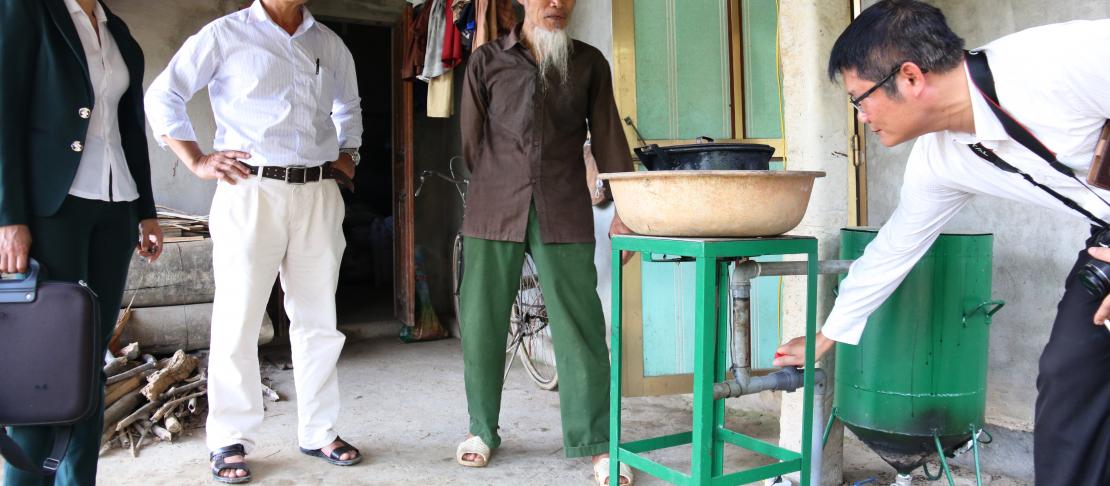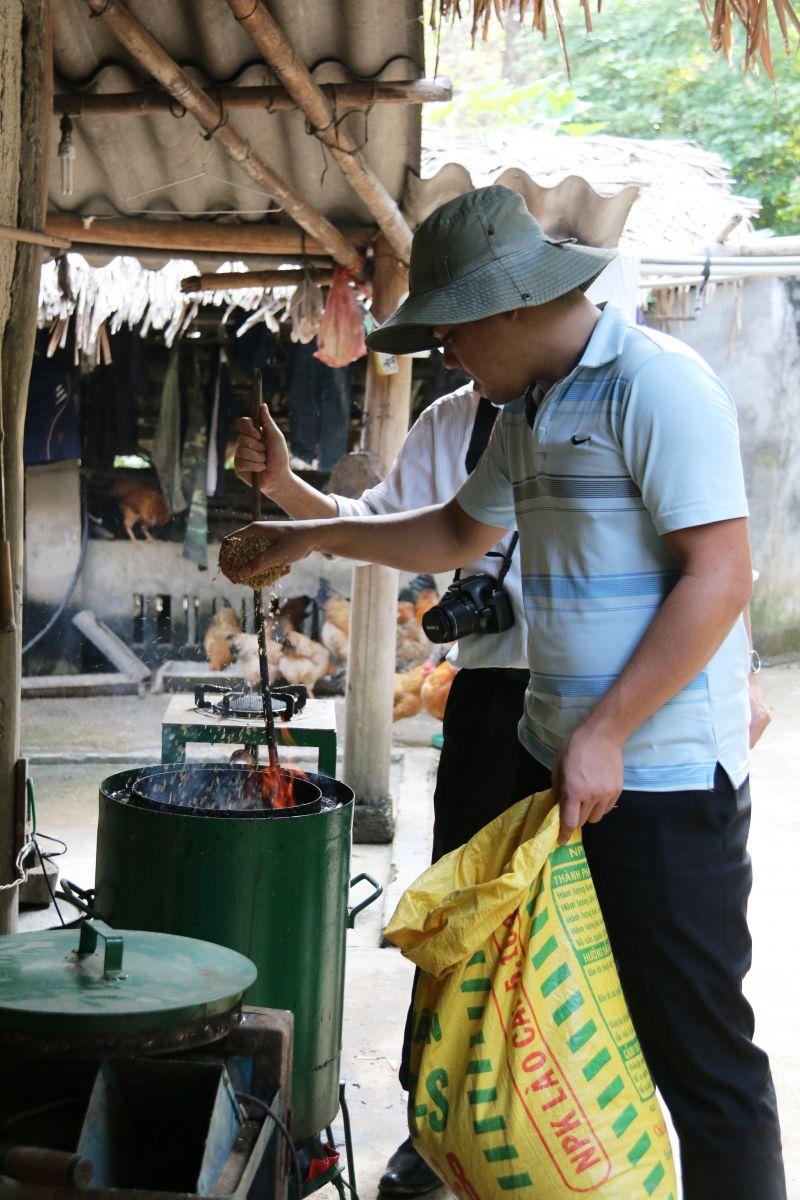Bioenergy takes off as a climate-smart agricultural practice in Vietnam

Agricultural wastes can either contribute to global warming or provide bio-energy for farm households and by-products that could enhance soil health.
Mr Chung from Ma Village, Yen Bai province of Vietnam used to gather firewood from the forest for household cooking. This had been a daily tedious and backbreaking routine for a long time, not only for him, but also for many farmers in Southeast Asia.
But in using fuelwood for cooking, carbon dioxide, a greenhouse gas (GHG), is released into the atmosphere and contributes to global warming. Agricultural activities increase emissions as well, contributing an average of 30% to worldwide GHG emissions. For example, chemical fertilizers add nitrogen to the soil and contribute to further production of nitrous oxide, another GHG. Scientists, however, agree that climate-smart agriculture (CSA) could have a large contribution towards climate change mitigation.
Gasifiers as a climate-smart technology
A team from the Institute for Agricultural Environment (IAE) in Vietnam developed the gasifier as a means to mitigate GHG emission from various farm and household activities. It makes use of crop residues, which include rice straw and hulls, sawdust and corn cobs, to produce energy for household cooking. Other by-products include organic biochar as soil enhancer and a tarry liquid that could be used as bio-pesticide.
With support from the CGIAR Research Program on Climate Change, Agriculture and Food Security (CCAFS), the gasifier was introduced to three Climate-Smart Villages (CSVs) located in different Vietnamese provinces: Ma Village in Yen Bai, My Loi Village in Ha Tinh and Tra Hat village in Bac Lieu.
CSVs are areas identified as high risk from the effects of climate change and shall be the focus of local research and development initiatives. This project is part of a broader initiative to reduce agricultural emissions through efficient use of crop residues to produce energy while reducing carbon footprint. It is hoped that this project would complement the climate-smart action plans of the three CSVs under CCAFS Southeast Asia.
Each village under the project received 16 gasifiers. On-farm experiments were established in each CSVs to demonstrate the benefits of using biochar for the rice and corn crops. Biochar is known to retain and regulate the nutrients available in the soil, hence, improving soil fertility. Biochar enhances crop growth and increases carbon storage in the soils.
Mr Khiem, a technician from the Institute for Agricultural Environment (IAE), putting rice hull into the gasifier. The gasifier makes use of crop residues farmers often just dispose to produce energy, soil enhancers and bio-pesticides. Photo: Amy Cruz (CCAFS)
Experiences from the field
With the gasifier that was introduced by the IAE, cooking is now a breeze for Mr Chung and his family. With 3 kg of rice hull, he could cook for two hours. He also found that the biochar produced by the gasifier was a good soil enhancer, helping his vegetables grow well. “It is good because it lessens deforestation,” adds Mr Chung.
Ms Lam Thi Minh initially had trouble starting the gasifier but later decided to give it another try and put aside their gas stove. Using the equipment, she now saves VND 200,000 (USD 8.96) each month from fuel cost. In her experience, the gasifier only requires 4 kg of rice hull as fuel for almost three hours of cooking. An innovative farmer, Mr Tran Thanh Long did his own experiment and found that sawdust gives off stronger and longer flame than rice hull.
Mr Hoang Van Hau opted to use his conventional firewood stove in combination with the gasifier. According to him, the gasifier alone does not produce enough energy to cook large quantities of food to feed his family of six.
In the on-farm demonstrations, the corn applied with biochar was observed to have grown faster and better. The tarry liquid by-product of the gasifier is an effective bio-pesticide against termites and other pests. A downside though, according to some farmers, is that electricity is needed to operate the gasifier fan. This would be a problem during power outages. The IAE team then suggested using battery-powered electric fans when electricity is intermittent.
Overall, the farmers appreciated the benefits of using the gasifiers and the by-products. Mr Tam, the head of the village, expressed support for the project knowing that the gasifiers produce less carbon dioxide compared with the conventional stoves, and would help mitigate climate change. Farmers could also exchange the use of chemical fertilizers for biochar, further reducing their carbon footprints.
Read more:
Project pioneers: Understanding how women farmers lead the way in mitigation activities
Climate change and agriculture: Is it a gloom and doom scenario?
Ma Village maps land use to know viable agriculture options
Amy Cruz is the junior communications specialist for the World Agroforestry Centre Philippines. She is also a communication consultant with the CCAFS SEA program.




